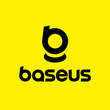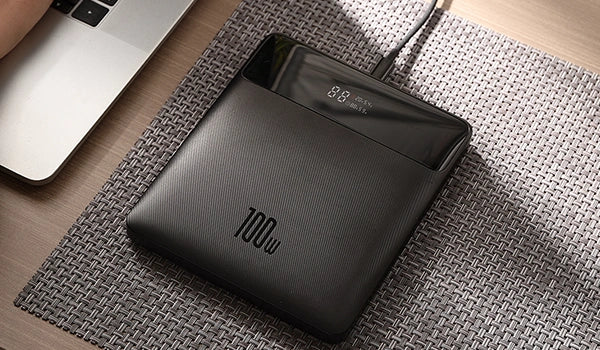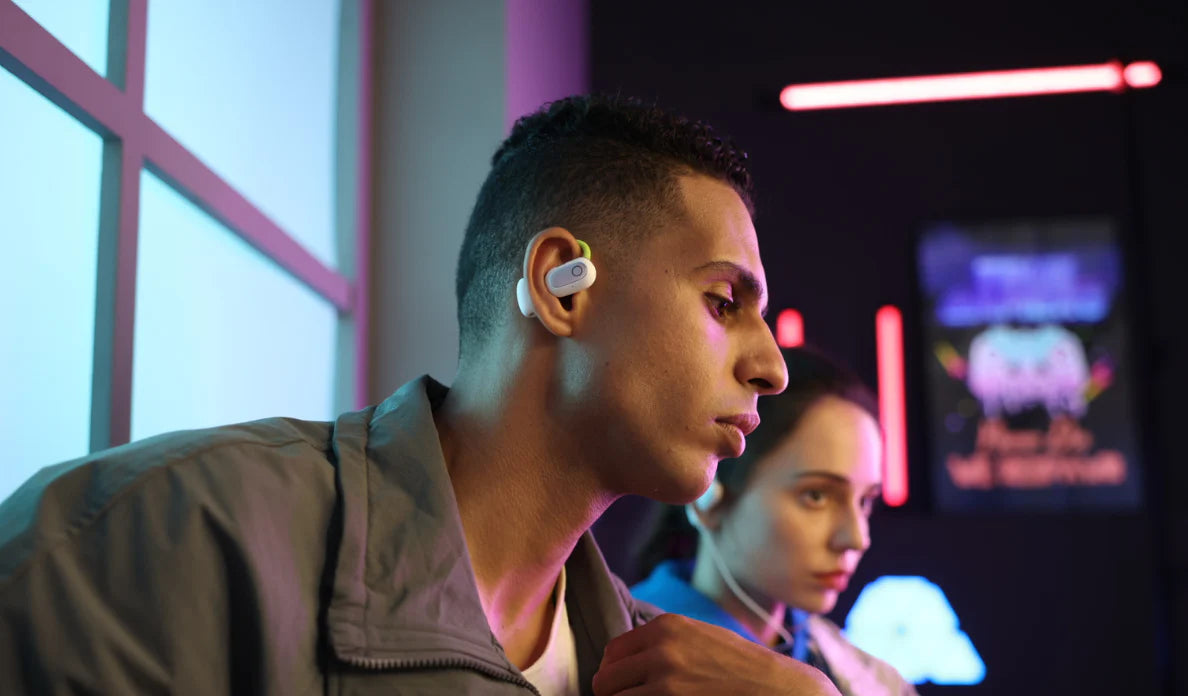How many charges can I get out of that mobile power bank? If you’re considering buying a portable charger, you’ve probably asked this question. After all, what really matters apart from how many times you can charge your laptop or phone?
In this guide, we will walk you through what mAh means. After that, we will go over how to make sure your portable chargers give you the power you need.
What Does mAh Mean?
mAh is short for milliamp hours. This is the standard measurement for the output of a portable device or charger.
Understanding mAh makes it easier to understand:
- Why your device’s battery lasts as long as it does
- How many charges your portable charger is capable of giving
It’s normal to be unsure exactly why your portable offers the charging power it does. mAh is the standard metric that provides a precise explanation.
mAh is a system of units measuring battery capacity. One milliamp hour is one thousandth (1/1000th) of an ampere hour (Ah). The number of mAh represents the quantity of electricity a battery can deliver or store over time.
What is mAh on a Battery or Power Charger?
When you’re talking about a battery or power charger, mAh expresses the flow of electrical current per hour. The mAh metric represents the capacity for one milliampere for one hour. So, 1,000 mAh means 1,000 milliamperes per hour.
For example, a device with 5,000 mAh can deliver a current of 1 milliampere for 5,000 hours (meaning 5 amperes for one hour).
Now, 5,000 mAh is a low capacity for a power bank. Lower mAh capacities mean that the charger is only suitable for smaller needs. For many people, a 5,000 mAh portable charger is enough to comfortably keep their phone charged throughout a regular day. You can rely on the charger until you find a wall outlet you can use.
How much mAh Does a Power Charger Need?
Portable batteries and portable power chargers range significantly in their mAh capacities. If you want to buy the right power charger for your needs, it’s good to understand the ranges.
Ultralight Power Banks

Some power banks range from 1,000 mAh to less than 10,000 mAh.
These days, power banks this small are not as popular as they used to be. They simply do not carry enough power to charge most people’s devices for more than one emergency. Obviously, they are not useful for devices such as laptops.
That being said, some people find light power banks good enough for their needs. One benefit that they offer is that they are usually very small and light. They don’t take up much space, often fitting on a keychain or inside a small purse.
If you use a very simple phone and don’t need to charge it much, low capacity power banks may be ideal for you. They can also be good for charging small headlamps and other lightweight outdoor or entertainment equipment.
Low Capacity Power Banks

Once you start approaching the 10,000 mAh range, you have a more substantial charging capacity. Low capacity power banks fall within the 7,000 to 15,000 mAh range.
That being said, you will more often see 10,000 mAh power banks. 10,000 is not just a well-rounded number; it’s a great milliamp-hour measurement for most people. These power banks may not fit into a small pocket well. However, they are still lightweight and don’t take up much space. They are slick, inexpensive, and can charge most modern smartphones several times.
Many modern 10,000 mAh power banks are modern devices that offer extra convenience. For example, for a lower price, you can get a 10,000 mAh power bank with fast magnetic charging. That way you can simultaneously charge your iPhone and power bank.
10,000 mAh power banks are good for ensuring your smartphone can stay charged throughout the day. Even if you use your phone a lot and the battery has lost some capacity, it should be enough.
10,000 mAh power banks are also great options for any USB-charged device. Lights, other mobile devices, and even small laptops can get some use out of them. However, if you have a laptop, medium capacity power banks stop being useful. They will not fully charge most laptops. For that, you need to go a bit heavier.
10,000 mAh Power Bank: How many charges?
Because this range of power banks is so popular, let’s look at what you can expect from them. Keep in mind that this isn’t exact (there is normally some variation). Exact mAh metrics for phones are not provided simply due to how unreliable they would be. However, we do roughly know the mAh required to (fully) charge popular smartphones.
Excluding SE, S, and Mini, most iPhones fall into the range of 2915 mAh (iPhone 6 plus) to 4422 mAh (iPhone 15 Pro Max). The average normally falls in the 3,000 to 4,000 range. Most iPhone SE, S, and Mini phones require less than 3,000 mAh.
iPhone batteries and power banks both vary according to conditions and may deteriorate over time. With that in mind:
- 5,000 mAh provides enough emergency reserve to fully charge a dead iPhone
- 10,000 mAh is enough to keep an iPhone charged on the go throughout the day
To keep a device you use a lot charged for more than one day, you will probably need more power.
Medium Capacity Power Banks

20,000 mAh and 30,000 mAh power banks are also popular choices. They are larger devices, but can still be comfortably carried in backpacks or stored in cars. They also come with a higher price tag but are still relatively affordable.
Once you get a reliable power bank of 20,000 mAh or more, you can comfortably charge a light laptop. Of course, you should also be able to keep your phone charged all day. Even if you’re constantly streaming video, 20,000 mAh is enough for most smartphones to stay charged.
20,000 mAh Power Bank: How many charges?
According to some MacBook users, you could charge a MacBook Pro almost 4 times. With heavier laptops, you can of course expect fewer charges.
Looking at the figures we went over above, it’s clear that you could fully charge a smartphone multiple times.
20,000 mAh is the respectable, balanced power bank capacity. They are good options for keeping two or three day-to-day devices charged. As an example, the Baseus Adaman Power Bank 65W 20000mAh comes with 4 ports. You could use it to charge your laptop, phone, and tablet at the same time. Depending on the battery capacities of each device, you can likely fully charge each of them.
Heavy Capacity Power Stations: 30,000+ mAh

When you want to be certain you can charge multiple devices multiple times, you need to go heavy. They can start to qualify as a laptop power bank at this point. In fact, once you start talking about 30,000+ mAh power banks, you’re talking about a camping setup. Or, you could be talking about a power bank to keep your workstation or gaming laptop charged.
30,000 mAh power banks make a good addition to a multi-day camping setup. You can be sure to get enough charge to get some use from multiple lights, speakers, and an offline Bluetooth smartphone.
For a multi-day camping or hiking trip, 30,000 mAh can often suffice. But if you have a powerful speaker or energy-intensive lighting, you may need more.
These larger devices come at a higher cost and are bulkier than the smaller alternatives we’ve covered. But if you want enough mAh in your charger to keep a whole set of electronics working, they can be worth the money.
Can you bring portable chargers on a plane?
There are some misconceptions about power banks on airplanes.
The main issue that people face when flying is devices containing lithium batteries. If you’re unsure about whether to put your power bank in checked baggage, find out what type of battery it has. Never put a power bank or other device with a lithium battery in checked baggage. Lithium-ion batteries are risky and have been known to catch fire or have thermal runaway. Either of these events can compromise the safety of all passengers.
In the US, the TSA and FAA both consider power banks to fall under the category of spare lithium ion and lithium metal batteries. That means you can only bring them on carry-on or have them on your person.
The IATA sets specific guidelines for lithium batteries in accordance with their Wh rating.
What is the Ideal mAh for a Power Bank?
Hopefully, this guide has provided you with a clearer idea of the right power bank for you. mAh capacities play a big part in deciding which one is right for you. mAh capacities also correspond with the total possible charges of your devices. Greater capacities also translate into a more expensive device.
A 30,000 mAh power bank is ideal for most people with extensive day-to-day power charging needs. It’s a balanced choice that can ensure you get the extra charge you need when there are no outlets available. That includes your phone, laptop, and one or two other devices.
Of course, if your needs are smaller, it’s always good to save some money with a smaller option!



